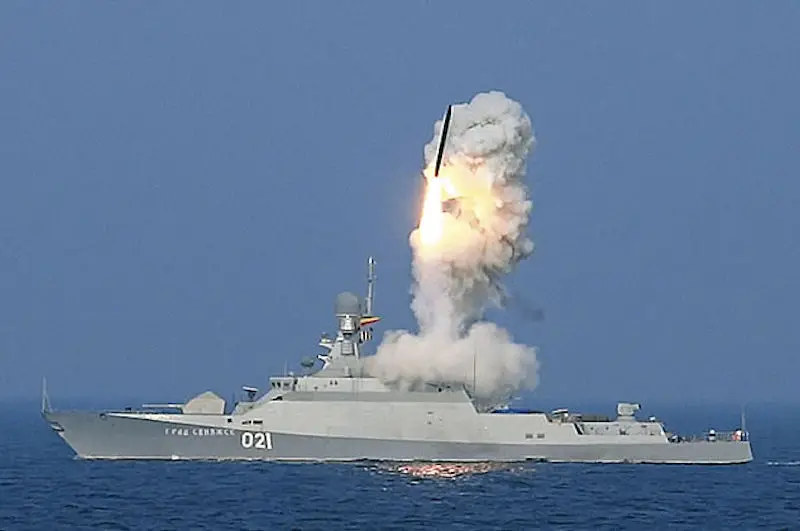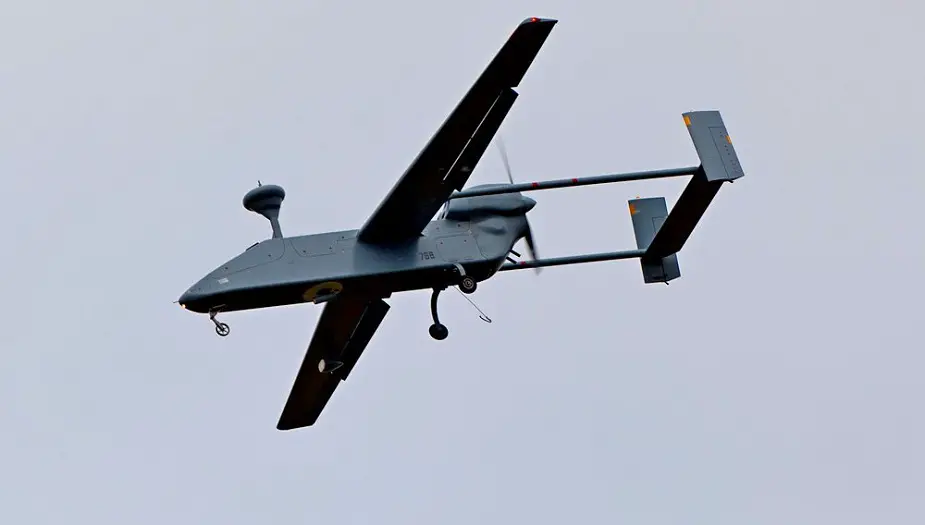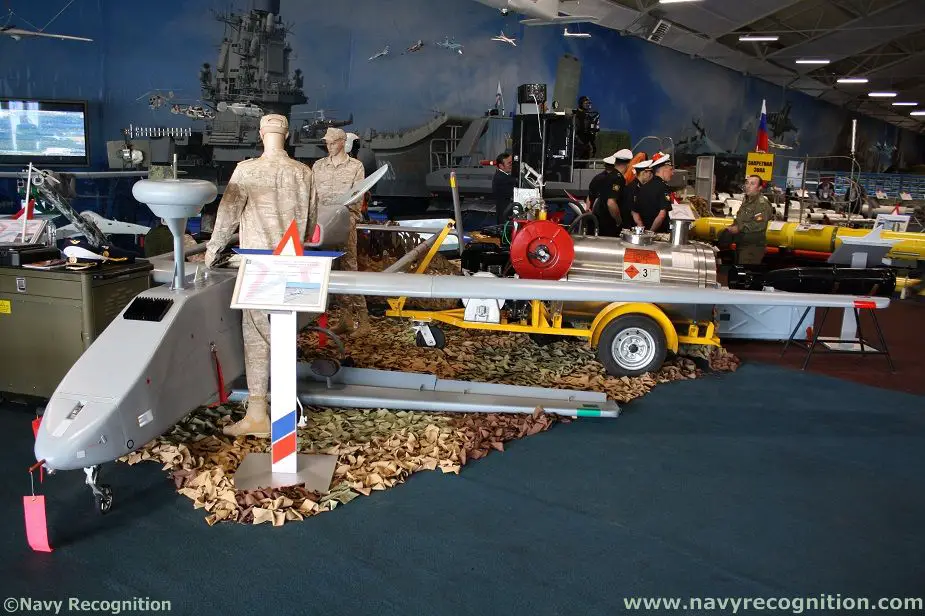Breaking news
Russian Navy to Use UAV for Cruise and Anti-ship Missile Targeting.
Forpost UAVs can efficiently guide Kalibr cruise missiles and Yakhont anti-ship missiles onto sea targets. On an exercise at the Baltic Sea such UAVs supplied target designation in real time to groups of missile boats for delivering strikes. These are the first such maneuvers of the Russian Navy. Previously, UAVs were used exclusively for reconnaissance and artillery fire correction. According to experts, the use of UAVs considerably enhances the fleet’s combat capabilities, the Izvestia newspaper writes.
 The Buyan-M Corvette "Grad Sviyazhsk" launches a 3M-54 Kalibr anti-ship missile during maneuvers in the Caspian Sea.
The Buyan-M Corvette "Grad Sviyazhsk" launches a 3M-54 Kalibr anti-ship missile during maneuvers in the Caspian Sea.
A source at the Navy Chief Headquarters told the Izvestia that during the Baltic Fleet’s recent drills the Forpost UAVs targeted for the first time Kalibr cruise missiles and Yakhont anti-ship missiles. Following receipt of the target designation the Baltic Fleet ships launched missiles. The use of drones was found successful. After optimization and finishing of UAV and ship’ onboard systems, this method will be introduced at other fleets.
The Forpost has every capability to become a target designator for cruise and anti-ship missiles. The size and lifting capacity of this UAV enable it to carry a powerful optronic suite. With its aid the Forpost will be able to easily detect large targets, surface warships of a likely foe in the first place.
Modern hardware enables the drone to operate at night and in all weathers. The Forpost has a sizable fuel supply and can operate in the radius of up to 250 km from the operator, developing the speed over 200 km/h and remaining in the air up to 17 hours. The UAV weighs over 450 kg. The maximum flight altitude is around 5,000 m.
 Forpost UAV in flight
Forpost UAV in flight
The electronic subsystems of the drone are being permanently improved. Before long some versions of the Forpost will get new modular optronic systems for identifying and radar stations (radars).
The modernized Forposts in the patrol area will be able to perform a number of new combat missions. The new radar will help detect potential targets for attack. The optic system will lock on the target in the sight and identify it.
The Forpost UAV was built using the Searcher Mk II drone previously bought from Israel. Today, the Russian armed forces are taking in similar equipment made fully in Russia. The Baltic Fleet’s shore-based units were among the first to receive the new equipment and optimize the new tactics of using the UAVs.
 Forpost UAV was used by Russia in Syria
Forpost UAV was used by Russia in Syria
The UAVs must be introduced for detecting enemy ships everywhere, expert Prokhor Tebin believes. "There are never problems with missiles in the Navy, and always difficulties with how to properly supply target designation to them," he said. "In using UAVs it becomes unnecessary to employ reconnaissance aircraft, which means that pilots’ lives won’t be risked. Another important factor is that the use of stealthy drones for gathering intelligence is always cheaper and usually more efficient than the use of conventional aviation."
Now the Navy receives corvettes with powerful missile armament whose use is fraught with difficulties. For instance, it is difficult to mount a powerful radar system on them. Also, it is difficult to supply such a ship with intelligence from an AWACS aircraft. Mass-produced drones can successfully resolve this problem at a low cost. Worth of note is the fact that the increased number of sources of target designation enhances the relevance of the information.
In the foreseeable future the drones will become a mandatory means of reconnaissance and target designation for most of the Russian surface ships. This will "significantly enhance their operational capability," Tebin says.
Today, Forpost UAVs are among the largest drones used by the Russian armed forces. The Forpost UAVs are intensely used in Syria for target search and identification, which improves the aviation efficiency. The updated version, Forpost-M, must become Russia’s first attack drone, the Izvestia writes.
© Copyright 2018 TASS. All rights reserved. This material may not be published, broadcast, rewritten or redistributed.




























